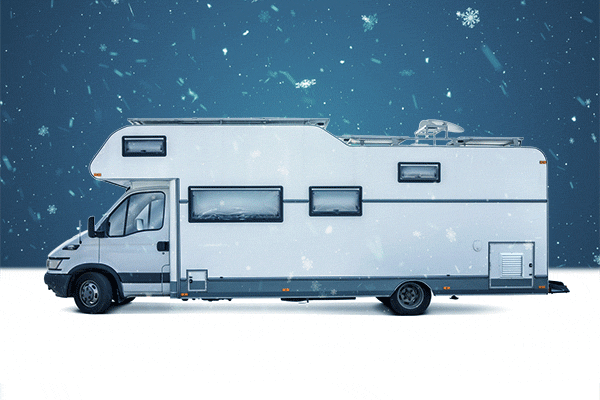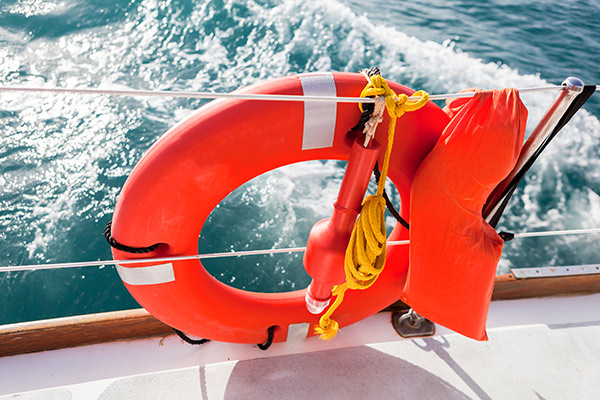Here’s the most important step in winterizing an RV: Do it before the temperature falls below freezing. “If you don’t winterize in time,” says Mike Dalton, service manager at McKay’s RV & Marine Center in Holden, Maine, “the water heater tank, valves and lines can freeze and crack. And that could mean thousands of dollars in repairs.”
While shops like McKay’s can do the work for you, it’s also possible—with a few basic tools and a couple hours of work—to winterize your RV in DIY fashion. Besides following the specific guidelines in the owner’s manual for your RV, here’s what else Dalton recommends doing.
Prepare The Water System
This will be the most time-consuming task involved in winterizing your RV—but also the most important. Here are the steps.
1. Gather materials.
You’ll need a wrench or pliers that can open the drains and petcocks on your water tanks. Also, purchase nontoxic antifreeze—probably 2–3 gallons, or whatever your owner’s manual advises. Be certain the antifreeze has a rating indicating it can handle the winter temperatures in your area.
2. Remove excess water.
Drain your fresh water tank by opening the drain line or petcock. Make sure your water heater is cool before opening the pressure relief valve and emptying it. Empty the gray and black water tanks, too.
3. Prep the hot water heater.
Turn off the breaker to the hot water tank. (After you do so, put tape on the breaker to remind yourself not to turn it back on until the water heater is filled again. This way, you won’t ruin your electric heating element.) Bypass the water heater using the valve or valves on it. By doing so, you’ll avoid needlessly filling your water heater with antifreeze.
4. Prep the fresh water pump.
If you have a newer RV, the pump should be equipped with a kit that allows you to avoid having to fill the tank with antifreeze. If it isn’t, you can put a suction line right into a bottle of antifreeze and pump it through the system. You could also install a pump winterization kit.
5. Run antifreeze through the system.
Turn on both the hot and cold faucets until antifreeze comes through, then turn the faucets off. Run enough antifreeze to push any remaining water out of the sink traps as well. Then press the spring in the center of the city water inlet until antifreeze comes through.
6. Relieve pressure.
Reopen one set of faucets (hot and cold) to alleviate pressure on the water lines and allow for expansion if a small amount of water remains.
Keep Out Critters
1. Remove all food.
Clean out all traces of remaining food and sweep out any crumbs from your RV. Keeping food in plastic storage containers isn’t adequate, as mice and other rodents can chew through them.
2. Repel rodents.
Mice can squeeze through even the tiniest cracks. Help keep them out by placing scented pouches that smell like balsam fir or peppermint oil around the RV. Dryer sheets work well, too. Just avoid using mothballs (the odor will linger in the RV) or poison bait (deceased rodents can also create quite a stink).
Finish Up
1. Seal up gaps.
Strong summer sun can dry out the sealing around the doors and windows, and any resulting gaps could lead to leaks. Check the seals that you have are still in place and, where they’re not, use caulking to repair them.
2. Treat the gas.
Add a fuel stabilizer, which will help keep the gas fresh. Run the engine for a few minutes to move the stabilizer through the system.
3. Wrap it up.
Covering your RV may not be necessary if it will be parked in an open area with lots of sunshine (which will help melt accumulated snow) and no trees (which would drop debris). If you use a tarp, be sure it’s breathable (plastic tarps can make the interior of the RV sweat and trap moisture). Crack the windows to help prevent mildew.
Your RV may be taking a winter’s nap, but your insurance shouldn’t. Keep your GEICO RV insurance year-round to make sure your RV stays protected.
Read more: How To Avoid Common RV Problems
By Julie Anne Russell










Leave a comment